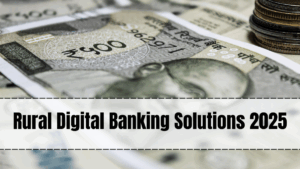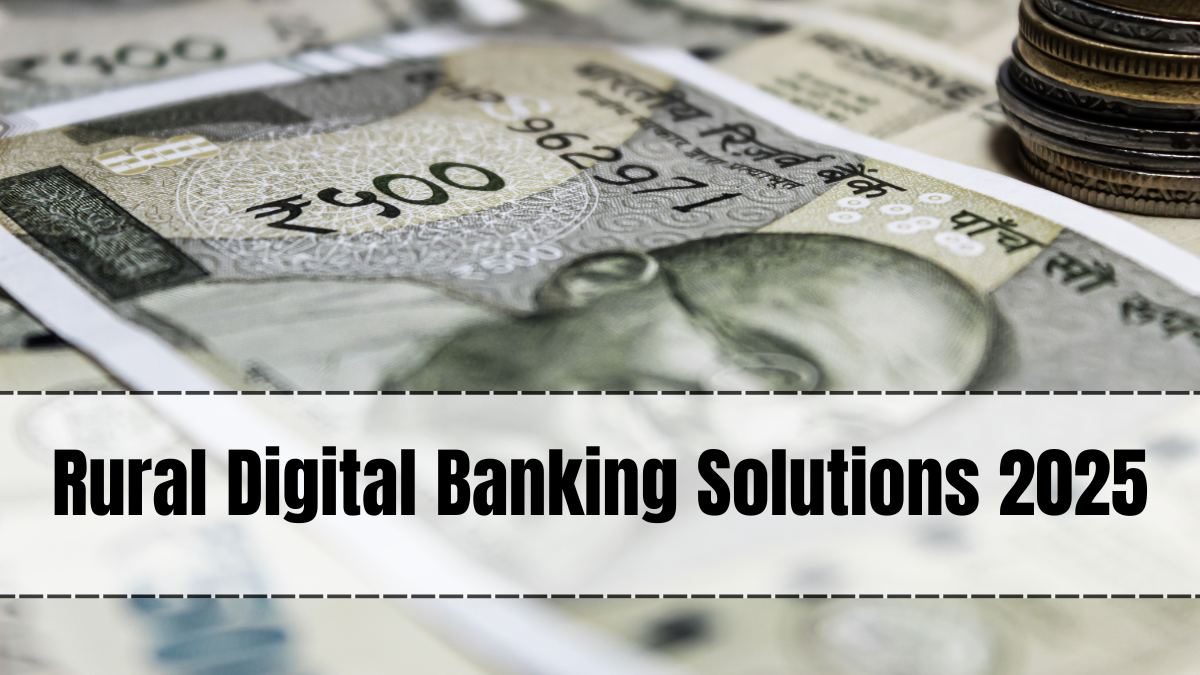In 2025, rural banking in India is undergoing a major transformation thanks to innovative fintech solutions designed for financial inclusion. Mobile-first platforms, biometric verification, and AI-powered fraud detection are enabling secure, fast, and transparent transactions even in the most remote areas.
The adoption of digital banking in villages is not just a technological shift—it’s a social and economic revolution that empowers farmers, small business owners, and rural households to access the same level of financial services as their urban counterparts.

Why Rural Digital Banking is Expanding Rapidly in 2025
Several factors are driving the rise of rural banking innovations:
-
Smartphone Penetration – Affordable devices and cheaper internet plans have connected rural communities like never before.
-
Government Initiatives – Schemes promoting financial inclusion such as Jan Dhan Yojana and PM Kisan are integrated with digital platforms.
-
Fintech Partnerships – Collaboration between banks and fintech startups has made rural financial services more user-friendly.
-
Cashless Transactions – Digital payments reduce the risk of theft and increase transparency.
These changes ensure that rural India is not left behind in the digital economy.
Key Digital Banking Solutions in Rural India
In 2025, multiple solutions are making rural banking accessible:
-
Mobile Banking Apps in Regional Languages – Apps designed with easy navigation and local language support make them more user-friendly for villagers.
-
UPI-Based Transactions – QR code payments for small shops and farmers’ markets enable seamless money transfers.
-
Biometric Authentication – Aadhaar-enabled payments ensure secure financial inclusion for non-literate users.
-
Voice Banking Services – Users can make transactions through voice commands in their local language.
-
Micro-Loans via Fintech Platforms – Farmers and small businesses can apply for instant credit without lengthy paperwork.
Such advancements are bridging the urban-rural financial gap.
Role of Fintech in Rural Banking Growth
Fintech companies are playing a crucial role in rural financial inclusion by:
-
Developing low-data mobile apps for areas with poor internet connectivity.
-
Offering AI-powered loan approvals that evaluate applicants without traditional credit scores.
-
Setting up digital banking kiosks in village community centers.
-
Providing training to rural entrepreneurs on cashless payment systems.
This ecosystem ensures rural banking is more inclusive and efficient.
Benefits of Digital Banking in Rural India
The 2025 rural banking model offers:
-
24/7 Access – No need to travel long distances to visit a bank branch.
-
Lower Costs – Reduced operational expenses mean cheaper services for users.
-
Faster Transactions – Payments and fund transfers are instant, even across states.
-
Increased Transparency – Digital records help prevent corruption and fraud.
-
Women’s Empowerment – Women can manage their own accounts securely via mobile apps.
With financial inclusion expanding, rural households are becoming more self-reliant.
Challenges in Rural Digital Banking
While the progress is impressive, rural banking faces some hurdles:
-
Limited internet access in remote villages.
-
Low awareness of digital banking benefits.
-
Cybersecurity concerns in less tech-savvy populations.
-
Resistance to moving away from cash-based transactions.
These challenges are being addressed through digital literacy campaigns and stronger cyber protection measures.
Government and Private Sector Collaboration
The success of financial inclusion in rural India is largely due to partnerships between:
-
Public Sector Banks – Offering affordable, government-backed digital products.
-
Private Banks – Introducing innovative solutions tailored to rural needs.
-
Fintech Startups – Providing agility and tech expertise.
-
Self-Help Groups (SHGs) – Spreading awareness in rural communities.
In 2025, many states are also incentivizing rural banking agents to expand their outreach.
Future of Rural Digital Banking Beyond 2025
By 2030, we can expect:
-
100% financial inclusion in India’s villages.
-
AI-driven savings and investment advice for rural households.
-
Blockchain-based record-keeping for secure land and loan documents.
-
Integration of digital banking with crop insurance and market price tracking.
The vision is a fully connected, financially empowered rural India.
Final Thoughts
The Rural Digital Banking Solutions 2025 wave represents a powerful step toward bridging the financial divide between cities and villages. With fintech innovations, government support, and increasing digital literacy, rural India is poised to benefit from secure, fast, and inclusive financial systems.
As technology becomes even more accessible, rural banking will not just be about transactions—it will be about transforming lives.
FAQs
What is the biggest advantage of rural digital banking in 2025?
The biggest advantage is instant, secure access to financial services without the need to travel to bank branches.
How are fintech companies helping rural banking?
Fintech companies are providing user-friendly mobile apps, instant loans, and training programs to improve financial inclusion.
Is internet connectivity still a problem for rural banking?
Yes, but low-data apps and offline transaction modes are helping bridge this gap.
Can rural women benefit from digital banking?
Absolutely, as it offers them financial independence and privacy in managing their accounts.
What role does biometric authentication play in rural banking?
It ensures secure access for people who may not be literate or familiar with passwords.
Click here to know more.
